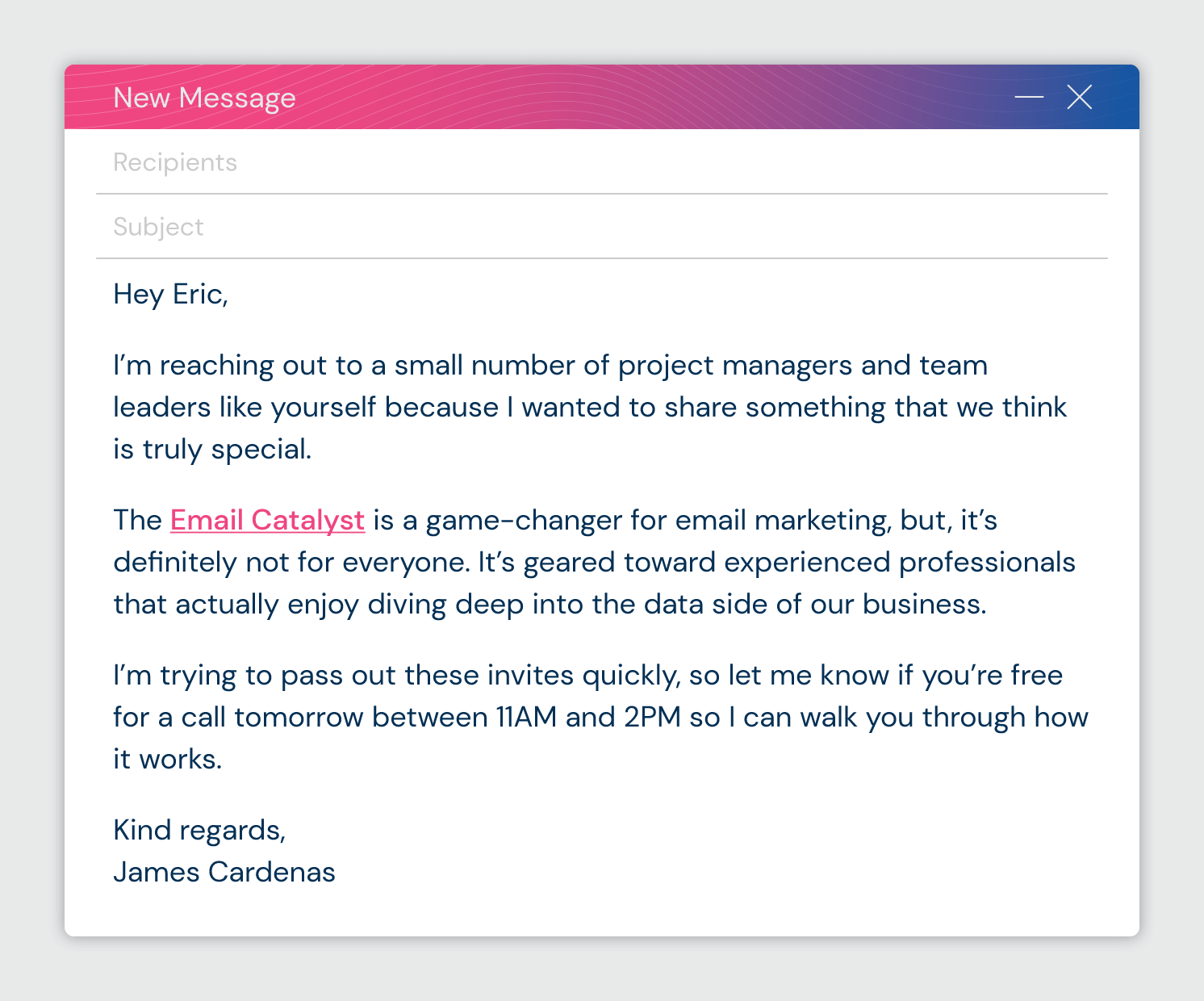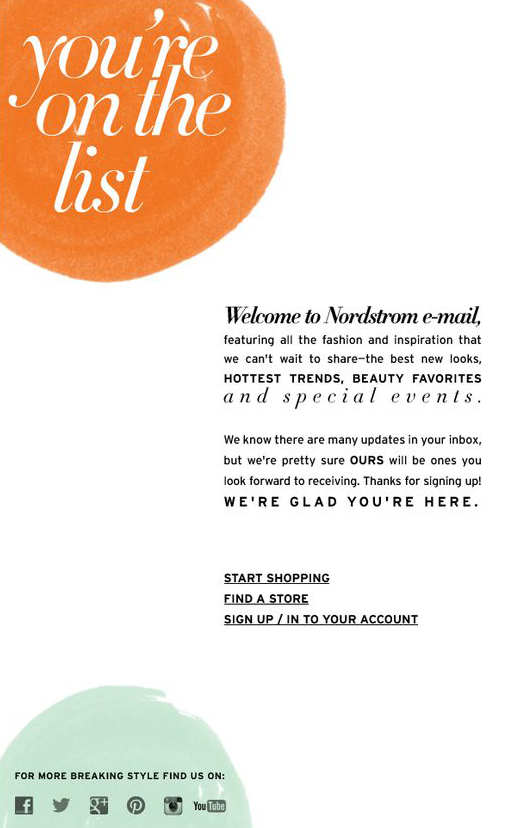Email marketing can seem costly. But why is it so expensive?
In today’s digital age, email marketing is essential for businesses. It connects them with customers, boosts sales, and builds brand loyalty. Yet, many wonder why it comes with a high price tag. The cost often surprises small business owners and startups.
They might ask, “Is it worth it? ” Understanding the reasons behind these expenses can help. In this blog post, we will explore the various factors contributing to the cost of email marketing. Additionally, we will discuss how a warm email list can impact your marketing budget. By the end, you will have a clearer picture of the costs involved and how to manage them effectively.

Credit: keap.com
Rising Costs Of Email Marketing
Email marketing costs are rising. Many businesses feel the pinch. Why is this happening? Several factors contribute to these increasing costs.
Tech Infrastructure
Maintaining a robust tech infrastructure is costly. Email service providers charge for their services. Costs include server maintenance, security, and data storage. These are necessary to ensure emails reach recipients. Without a strong infrastructure, emails may end up in spam folders. Investing in advanced tech tools is essential. They help track and analyze email campaigns effectively.
Content Creation
Creating engaging email content takes time and money. Skilled writers and designers are needed. They ensure emails are visually appealing and engaging. Quality content drives higher open and click rates. Images, videos, and interactive elements add to the cost. Regularly updating content is crucial. Fresh, relevant content keeps the audience interested. Outsourcing content creation to professionals also adds up. This ensures high-quality and consistency in email campaigns.

Credit: mailshake.com
Importance Of A Warm Email List
A warm email list is crucial for effective email marketing. It consists of subscribers who are familiar with your brand. These subscribers have engaged with your emails in the past. This familiarity leads to better engagement rates and higher conversion potential. A warm email list can make your marketing efforts more cost-effective. Let’s explore why a warm email list is so important.
Engagement Rates
Engagement rates are higher with a warm email list. Subscribers are more likely to open your emails. They recognize your brand and trust your content. This leads to better open rates and click-through rates. Here is how engagement rates improve:
- Subscribers know your brand
- They expect your emails
- They find your content valuable
Higher engagement rates mean your emails are effective. This reduces the cost per engagement. A warm email list ensures your marketing budget is spent wisely.
Conversion Potential
The conversion potential is much higher with a warm email list. These subscribers are already interested in your products or services. They are more likely to make a purchase. Here are some ways a warm email list boosts conversion:
- Subscribers trust your brand
- They are aware of your offers
- They have shown interest in the past
When subscribers are already familiar with your brand, the likelihood of conversion is higher. This results in better ROI for your email marketing campaigns.
In summary, a warm email list is vital for maximizing engagement and conversion rates. It makes your email marketing efforts more efficient and cost-effective.
Building A Warm Email List
Building a warm email list is crucial for successful email marketing. This list consists of subscribers who are genuinely interested in your content. This engagement leads to higher open rates and better overall performance. Let’s explore the importance of focusing on quality over quantity and effective segmentation strategies.
Quality Over Quantity
Having a large email list is not always beneficial. It’s better to have a smaller, engaged audience than a massive, uninterested one. Here’s why:
- Higher Engagement: A warm list results in more opens, clicks, and conversions.
- Better Deliverability: Engaged subscribers reduce the chances of your emails landing in spam.
- Cost-Efficiency: Email marketing services often charge based on the number of subscribers. A focused list saves money.
To build a quality email list, prioritize collecting emails from individuals who have shown a genuine interest in your brand. Use sign-up forms on your website, offer valuable content, and run targeted campaigns to attract the right audience.
Segmentation Strategies
Segmentation involves dividing your email list into smaller groups based on specific criteria. This strategy helps in sending more personalized and relevant content to subscribers. Here are some effective segmentation strategies:
- Demographic Segmentation: Group subscribers by age, gender, location, or occupation.
- Behavioral Segmentation: Segment based on past behavior, such as purchase history or email engagement.
- Interest-Based Segmentation: Create groups based on specific interests or preferences indicated by subscribers.
Using segmentation, you can tailor your messages to meet the needs and interests of different groups. This personalization increases engagement and builds stronger relationships with your audience.
Personalization And Its Costs
Email marketing can be costly due to the personalization required. A warm email list demands regular engagement and tailored content. These efforts increase expenses but help ensure better results.
Email marketing can be expensive. One reason is personalization. Personalizing emails means creating unique content for each recipient. This process requires a lot of effort and resources. It goes beyond just adding a name to the email.
Dynamic Content
Dynamic content allows tailoring emails to individual preferences. It can change based on the recipient’s behavior and interests. Creating dynamic content involves using advanced software. These tools are not cheap. They also require skilled staff to manage them. This adds to the overall cost.
Behavioral Targeting
Behavioral targeting involves tracking a user’s actions. This includes what they click on and how they interact with emails. This data helps in sending more relevant emails. Collecting and analyzing this data is complex. It requires sophisticated tracking systems. These systems are pricey and need constant updating. Skilled professionals are needed to interpret the data. This increases the expense further.
In conclusion, personalization in email marketing is costly. Creating dynamic content and behavioral targeting adds to these costs. These methods require advanced tools and skilled staff. This is why email marketing can be expensive.
“`
Compliance And Legal Factors
Email marketing often comes with high costs. A significant factor is compliance and legal obligations. Many regions have strict laws to protect consumers’ data. These regulations ensure that companies handle email lists responsibly.
Gdpr And Ccpa
The General Data Protection Regulation (GDPR) applies to companies in the European Union. It also affects companies that target EU residents. GDPR ensures that companies protect personal data. Non-compliance can result in hefty fines.
The California Consumer Privacy Act (CCPA) covers businesses in California. It also impacts businesses that collect data from California residents. CCPA focuses on consumers’ rights to know, delete, and opt-out. Ignoring CCPA can lead to significant penalties.
Opt-in Requirements
Both GDPR and CCPA have strict opt-in requirements. Businesses must obtain explicit consent before sending marketing emails. This means consumers must agree to receive emails. Companies cannot assume consent.
Maintaining a warm email list requires constant monitoring. Businesses need to ensure that all contacts have opted in. This process can be time-consuming and costly. It often involves legal advice and regular audits.
Email Marketing Tools And Services
Email marketing can be costly. One reason is the wide range of tools and services used. These tools help manage and execute campaigns, but they come at a price. Here, we explore the key components that contribute to these costs.
Automation Platforms
Automation platforms are essential for modern email marketing. They save time and increase efficiency. These platforms allow you to set up automated workflows, ensuring emails are sent at the right time. Popular options include:
- Mailchimp: Known for its user-friendly interface and robust features.
- HubSpot: Offers advanced marketing automation and CRM integration.
- ActiveCampaign: Provides powerful automation and personalization options.
These platforms often come with a subscription fee, which can add up. The cost usually depends on the number of contacts and features you need.
Analytics And Reporting
Understanding the performance of your email campaigns is crucial. Analytics and reporting tools provide insights into metrics like open rates, click-through rates, and conversions. Key features include:
- Detailed Reports: Track the success of each email.
- A/B Testing: Compare different email versions to see what works best.
- Real-Time Data: Monitor campaign performance as it happens.
Investing in these tools ensures you can refine your strategy and improve results. But, this investment also contributes to the overall cost of email marketing.
Maximizing RoI
Email marketing can be costly, but focusing on Maximizing ROI can make it worthwhile. By optimizing your campaigns, you can get the most out of your investment. This means using strategic techniques to boost engagement and conversions. Let’s explore some key strategies to maximize your email marketing ROI.
A/b Testing
A/B Testing is a powerful tool to improve your email campaigns. It involves sending two different versions of an email to a small segment of your list. Based on the results, you can determine which version performs better. This helps you understand what works best for your audience.
Key elements to test include:
- Subject lines
- Email content
- Call-to-action buttons
- Send times
Testing these elements can lead to higher open rates and better engagement. This translates to a higher return on investment.
Performance Metrics
To maximize ROI, track your Performance Metrics. This helps you understand how your emails are performing. Important metrics include:
| Metric | Description |
|---|---|
| Open Rate | The percentage of recipients who open your email. |
| Click-Through Rate (CTR) | The percentage of recipients who click on a link in your email. |
| Conversion Rate | The percentage of recipients who complete a desired action. |
| Bounce Rate | The percentage of emails that were not delivered. |
| Unsubscribe Rate | The percentage of recipients who unsubscribe from your list. |
By analyzing these metrics, you can identify areas for improvement. This allows you to make data-driven decisions to enhance your email marketing strategy.
Future Trends In Email Marketing
Email marketing can be costly due to the need for a warm email list. Building and maintaining a quality list requires time and resources.
Email marketing is changing quickly. New trends are shaping its future. Businesses must stay updated. This helps them stay ahead in the competitive market. Let’s dive into some key trends.
Ai And Machine Learning
AI and machine learning are making email marketing smarter. These technologies analyze user data. They help create personalized email content. This increases engagement and conversion rates. AI can predict the best times to send emails. It ensures emails reach the right audience. Machine learning can automate A/B testing. This helps optimize email campaigns efficiently.
Interactive Emails
Interactive emails are gaining popularity. They make emails more engaging. Users can complete actions within the email. This includes surveys, quizzes, and polls. Interactive elements reduce the need to visit external sites. This improves user experience. It also boosts click-through rates. Adding animations and videos can make emails more attractive. This trend will continue to grow. Businesses should incorporate interactive features.
“`

Credit: mailbakery.com
Frequently Asked Questions
Why Is Email Marketing So Costly?
Email marketing can be costly due to software subscriptions, design services, and list management. The investment in quality content and targeting ensures better engagement and ROI.
What Factors Increase Email Marketing Costs?
Costs increase with advanced segmentation, personalized content, and automation tools. High-quality design and analytics software also add to the expense.
How To Reduce Email Marketing Expenses?
To reduce costs, use affordable email software, focus on quality over quantity, and regularly clean your email list.
Is A Warm Email List Worth The Investment?
A warm email list is worth it as it leads to higher engagement, better conversions, and increased customer loyalty.
Conclusion
Investing in email marketing isn’t cheap. A warm email list takes time. Quality contacts need nurturing. This ensures higher engagement and conversion rates. Effective strategies require skilled professionals. Software and tools also add to costs. Yet, the returns can be significant.
A well-maintained list builds trust. It drives consistent revenue. So, while pricey, the investment often pays off. Consider the benefits against the costs. With careful planning, email marketing can be worth every penny.




